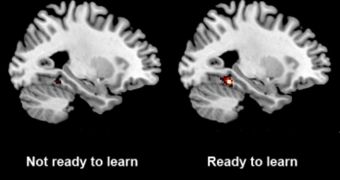A new investigation by researchers at the Massachusetts Institute of Technology (MIT), in Cambridge, demonstrates that the human brain is not always primed to learn new things, and absorb information.
The team that conducted the study showed that activity patterns in an area of the brain called the parahippocampal cortex (PHC) may be used as an indicator for predicting how good people will be at remembering a visual scene.
MIT professor John Gabrieli says that such scenes are the easiest to remember, since visual memory is very well developed in humans. In addition, the eyes transmit the largest amount of information to the brain of all the five sense.
In a paper published in the latest issue of the scientific journal NeuroImage, the MIT group shows that high activity in the PHC seems to make people less capable of remembering an image they were shown in a controlled lab setting.
Conversely, when PHC neural activity levels are low, individuals appear to be more primed to learn new things. “When that area is busy, for some reason or another, it’s less ready to learn something new,” Gabrieli explains.
The MIT expert holds an appointment as the MIT Grover Hermann professor of health sciences and technology and cognitive neuroscience. He is also the principal investigators of the McGovern Institute for Brain Research.
One of the reasons why the PHC is so important in the formation of new memories is the fact that it's located around the hippocampus. This region of the brain plays an essential role in the formation of long-term memories, as well as in other higher cognitive functions.
During the new experiments, participants were made to look at around 250 color images which, while their brain activity was being surveyed using functional magnetic resonance imaging (fMRI). Those who remembered the images best tended to exhibit low PHC activity levels beforehand.
“The significance of this study is that it suggests that beyond the inherent memorability of things, and how well the memory systems are working, there’s a huge role to be played by how well prepared you are to process what’s coming in,” Nicholas Turk-Browne says.
The expert, who holds an appointment as an assistant professor of psychology at the Princeton University, was not involved in the new research effort.

 14 DAY TRIAL //
14 DAY TRIAL //